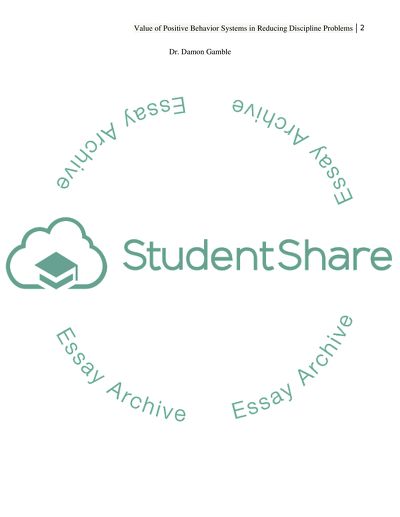Cite this document
(The Value of Positive Behavior Support Systems in Reducing Discipline Research Paper, n.d.)
The Value of Positive Behavior Support Systems in Reducing Discipline Research Paper. Retrieved from https://studentshare.org/education/1766484-positive-behavior-system-hypothesis-if-positive-behavior-is-implemented-then-the-discipline-problems-with-improve
The Value of Positive Behavior Support Systems in Reducing Discipline Research Paper. Retrieved from https://studentshare.org/education/1766484-positive-behavior-system-hypothesis-if-positive-behavior-is-implemented-then-the-discipline-problems-with-improve
(The Value of Positive Behavior Support Systems in Reducing Discipline Research Paper)
The Value of Positive Behavior Support Systems in Reducing Discipline Research Paper. https://studentshare.org/education/1766484-positive-behavior-system-hypothesis-if-positive-behavior-is-implemented-then-the-discipline-problems-with-improve.
The Value of Positive Behavior Support Systems in Reducing Discipline Research Paper. https://studentshare.org/education/1766484-positive-behavior-system-hypothesis-if-positive-behavior-is-implemented-then-the-discipline-problems-with-improve.
“The Value of Positive Behavior Support Systems in Reducing Discipline Research Paper”, n.d. https://studentshare.org/education/1766484-positive-behavior-system-hypothesis-if-positive-behavior-is-implemented-then-the-discipline-problems-with-improve.


